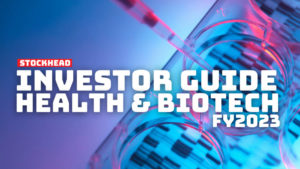Adherium (ASX:ADR) chief Rick Legleiter is crystal clear about what really counts when it comes to commercialising a device – in this case gadgets to improve adherence to medications for asthma and chronic obstructive pulmonary disease (COPD).
“In real estate it’s about location, location, location; in health care it’s about reimbursement, reimbursement and reimbursement,” he says.
“If the products are not getting reimbursed, the doctors aren’t being paid for their services and consumers don’t want to pay. That makes it hard to get market access to scale and grow.”
In effect, Legleiter is referring to the human trait of being willing to spend perhaps $150 a month on café lattes, but baulking at shelling $30 or so on something that will improve their health.
Originally, Adherium supplied the big pharmaceutical companies with its Hailie device, for their clinical trials. Now Adherium is moving to another phase altogether, with the rollout of internet-connected devices that generate more meaningful usage data.
This foray is pitched at the emerging remote patient monitoring (RPM) sector, with the company signing up anchor clients and partners to underpin this push.
Having just raised $13.5 million in a placement, Adherium has the breathing space (pardon the pun) to pursue its remote patient monitoring ambitions.
Adherium is targeting a subset of difficult-to-treat and severe patients, who are at extra risk of dying.
About Adherium
Originally known as Nexus6, Adherium was founded in 2001 by Kiwi engineer Garth Sutherland, who sought a tech-driven approach to managing his own chronic asthma.
The first product, Smartinhaler, stemmed from this.
In 2003, the company produced its first product for clinical trials and in 2009 won US Food and Drug Administration clearance under the 510(k) device pathway.
After a number of seed raisings, Adherium debuted on the ASX on August 26, 2015, having raised $35 million at 50 cents apiece in the initial public offer.
A foundation client, Astrazeneca, invested $3 million.
Sutherland led the company post-listing and until June 2017, when he was replaced by Arik Anderson who in turn was succeeded by Mike Motion. However, Motion did not prove perpetual and was replaced by Legleiter in May 2021.
The Kansas-born Legleiter was formerly the chief executive officer of ASX-listed device play Universal Biosensors and has worked extensively in healthcare in Germany and the US.
Adding later fizz to the Adherium story, ASX respiratory diagnostics counterpart Respiri made a conditional takeover approach in mid-2021, but the entreaty went nowhere.
Pimping up the puffer
The Hailie sensors wrap around standard inhalers to measure inhalation flow rates, usage and adherence. More than 180,000 Hailies have been sold to date (predominantly for clinical trial use).
The broader Hailie platform provides remote monitoring of medication dosage and adherence for clinicians and other healthcare providers.
The next-generation Bluetooth-enabled Hailies capture data and provide real-time feedback to the patient – and their doctor – through a software application, with the data sharing enabled through software tools.
Haile is the first and only digital sensor of its ilk with physiological data to be approved under the FDA’s 510(k) pathway. The original Hailies are compatible with 90 per cent of the top 20 US medication brands by sales volume, while the next-generation ones cover about one-third of the market at this stage.
So far, the Hailie mark twos have been cleared by the FDA for two leading inhalers: Glaxosmithkline’s Ellipta and Astrazeneca’s Symbicort. An application for Glaxosmithkline’s pressured dose inhalers and Teva Pharmaceuticals’ Proair has also been lodged.
Adherium’s key premise is that adherence is poor, with 92 per cent of asthma users either deploying a poor technique or not using the inhalers altogether.
“If used incorrectly, the medicine ends up in the mouth and back of their throat rather than their lungs,” says Legleiter.
On evidence to date, Adherium claims Haile has improved asthma compliance by 180 per cent for kids and reduced “severe exacerbations” in adults by 61 per cent.
RPM revs up
In July, US remote monitoring specialist Perigon Health 360 signed up to distribute the next-generation Hailie sensors, while Hailie has also been incorporated into Perigon’s proprietary platform, Medesto.
In September, chronic care management leader Dulcian Health agreed to deploy Hailie, thus triggering reimbursement.
In the UK, medical technology mob Helicon Health has also signed up to distribute the Hailies, although reimbursement does not yet apply in the Old Dart.
Adherium teamed up with Carecentra Inc to integrate the New York-based software company’s artificial intelligence driven ‘behavior shaping’ platform. In effect, the resulting respiratory risk management system helps patients with exacerbations before they end up in the emergency department.
Reimburse me
Adherium is leveraging the crucial US reimbursement codes for “remote physiological monitoring” (respiratory flow rates) won back in 2019 (the ensuing pandemic meant not too much happened in the interim).
The scope of reimbursement was expanded to remote monitoring, for inhaler use, in January this year.
Legleiter explains, this reimbursement creates a new revenue source for doctors and hospitals.
For generating the data, the doctors receive a fee of $US55.72 ($82.69) per patient per month and then additional $US50.18 for a 20-minute consultation, to discuss aspects such as their maximum and average flow rates.
(There wasn’t much for the doctors to talk about with the old devices because it was binary outcome: they were either being used, or not.)
If the medicos spend another 20 minutes, they get another $US40.84.
As Legleiter says: “Data is money and Adherium gets paid generating and transmitting patient data and insights.”
Adherium models per-patient revenue of $US1,270 to $US1,760 a year of reimbursement for the doctors. For the company itself, this translates to per-patient US$180 to $US360 a year, derived from both subscriptions and data.
Self-insured employers? Sounds like a plan
Adherium is also eyeing an alternative market: US companies that run their own health insurance schemes for their employees with a per-member, per-month revenue model.
About three-quarters of all US employers with more than 500 staff self-insure with at least one plan.
Typically, these are managed by a health insurer, but the company bears the underwriting risk.
Adherium wants to gather as much ‘real world’ evidence as possible to convince these employers that Hailie would more than pay its way, by way of reduced absenteeism and hospitalizations.
At a time of skills shortages, providing Hailie with health plans could also help to attract and to retain staff.
Adherium hopes to sign its first self-insured payor in the 2023-’24 year.
Finances and performance
In the pandemic era of big-ticket fiscal and monetary stimulus, the denominations of ‘trillions’ and ‘billions’ became devalued as governments and central banks dispensed gazillions of dollars of support.
But in the context of ASX stocks, we’re still impressed when a company issues billions of shares almost equivalent to its market capitalisation – as Adherium has done.
In October, the company pocketed $13.5 million in gross proceeds from a placement of 2.7 billion ordinary shares for the princely consideration of half a cent a share. A follow-on share purchase plan will be announced “in due course”.
The three-stage placement was supported by key Adherium shareholders, Trudell Medical and Bioscience Managers Translation Fund, plus an unnamed institution, now believed to be Sydney’s Regal Funds.
Totaling 2.547 billion shares – give or take – the first two tranches were approved at an extraordinary general meeting in October (they exceeded the company’s placement capacity).
The remaining tranche of 152.5 million shares to Trudell needs to be approved at the company’s AGM on November 30, as this will take Trudell beyond the 19.9 per cent takeover threshold.
The raising was accompanied by an unlisted option to buy an ordinary share at an exercise price of one cent each by March 31, 2024. Investors receive one option for every two shares subscribed for, which would raise a further $13.5 million if fully exercised.
As a show of support, chair Lou Panaccio agreed to take up 20 million shares.
Meanwhile, Adherium reported modest revenue of $529,000 for the year to June 2022 and a $11.2 million loss. This underlies the importance of the capital raising.
The September quarter sales receipts of $578,000 reflected clinical trial services and – importantly – the first revenues from remote patient monitoring activities.
Adherium shares over the last 12 months have traded between two cents (October last year) and their current all-time low of 0.4 cents. The stock hit a record 70 cents in October 2015.
Post raising, Adherium has more than 4.775 billion shares on issue, so we feel a share consolidation coming on.
stock share price today
Dr Boreham’s diagnosis
Adherium’s quest is clear: “Our goal is to get to 80,000 patients by 2024, which would be one per cent of the 8.5 million serviceable market of severe or difficult to treat patients.”
The company also has clear and quantified targets, including one healthcare system in the US (such as a hospital chain), or the local equivalent by 2023, with three by 2024 and 10 by 2025.
Then there are the asthma and chronic obstructive pulmonary disease (COPD) clinics and of course the remote health providers already monitoring for cardiovascular disease or diabetes.
“This is really going to be the new standard for preventative treatment,” Legleiter says.
“We want to give the doctors the information to intervene before these patients are admitted to hospital.”
He says with elderly COPD patients, there’s a tendency to “just get by” and keep a stiff upper lip – probably a blue one.
“You don’t want them just getting by because the next thing is they will be in an ambulance,” he says. “This technology has a fantastic opportunity to help people.”
Disclosure: Dr Boreham is not a qualified medical practitioner and does not possess a doctorate of any sort. But he adheres to breathing and that is surely a convenient qualification for writing puff(er) pieces.
This column first appeared in Biotech Daily.
You might be interested in












